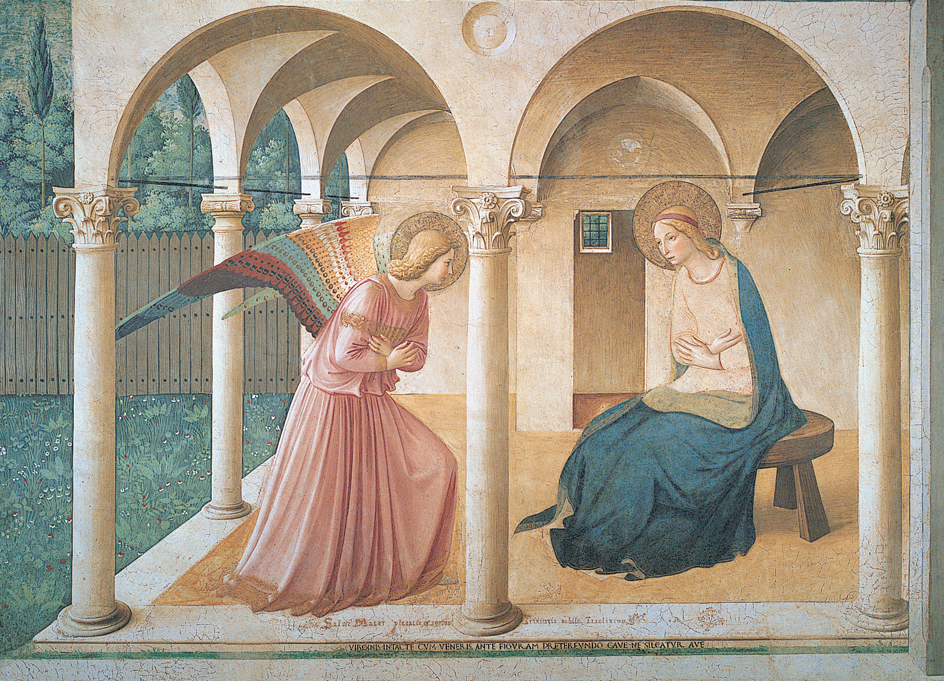Annunciation << uh `nuhn` see AY shuhn >> is the announcement, according to Luke 1: 26-38, that the angel Gabriel made to Mary. He told her that she was to be the mother of Jesus, who was to be called “the Christ.”
The Annunciation should not be confused with the Immaculate Conception of Mary. In Roman Catholic belief, the Immaculate Conception means that Mary, at the instant of her existence in her mother’s womb, was free from original sin.
Beginning in medieval times, the words of the angel at the Annunciation, “Hail, full of grace, the Lord is with thee,” gradually became the opening words of the “Hail Mary” prayer, though that prayer did not receive its full form until the 1500’s. Another devotion honoring the Annunciation developed into the Angelus prayer (see Angelus ). Traditionally, the Angelus is recited three times daily—in the morning, at noon, and in the evening, when church bells also are rung to commemorate the birth of Jesus. The Annunciation has been the subject of paintings by great artists, including the Italian painters Fra Angelico and Andrea del Sarto and the Flemish painter Jan van Eyck. Mary usually is shown holding a book or some needlework, and Gabriel carries an olive branch or a flower.
See also Mary .

